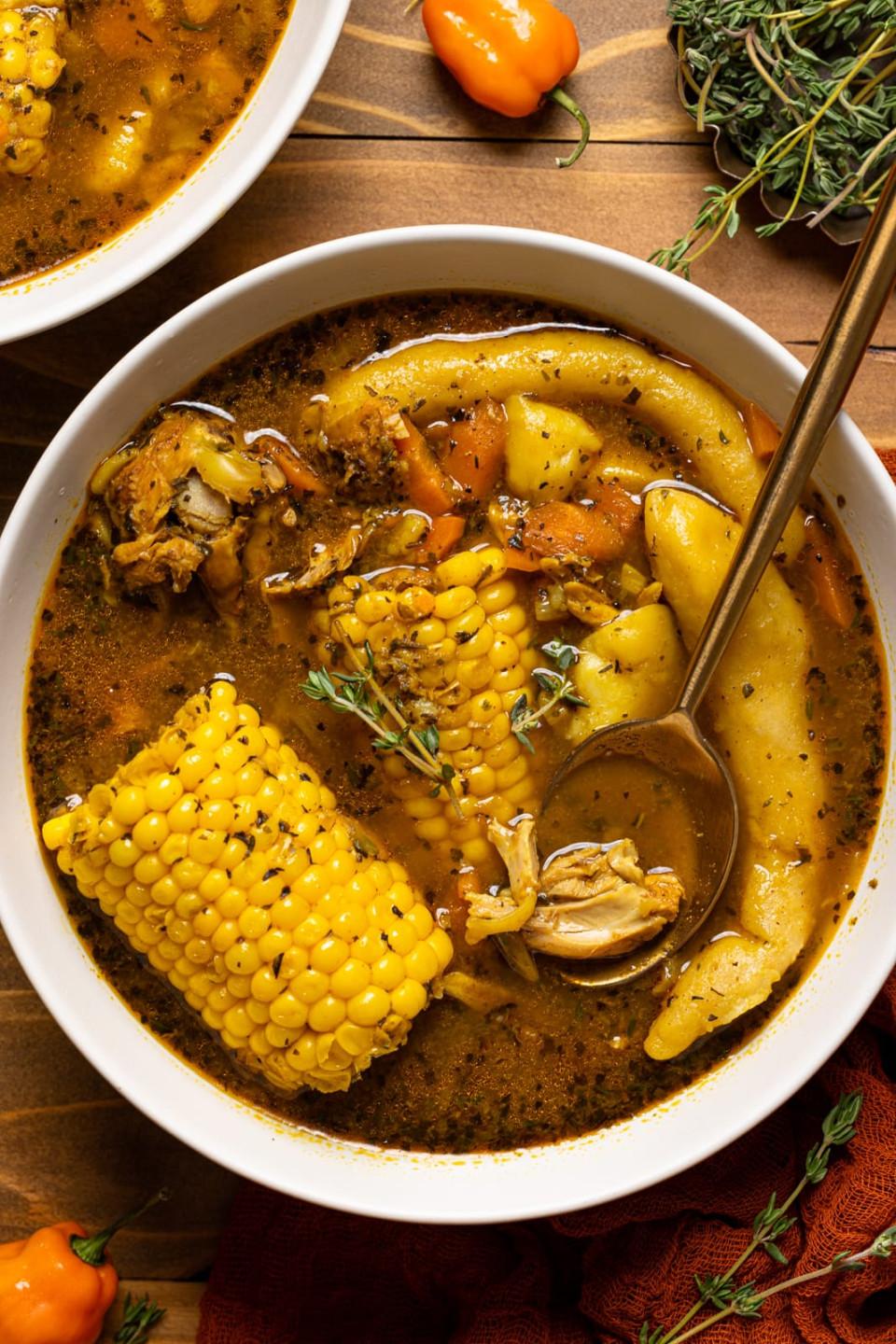Jamaican chicken soup, a vibrant and comforting dish, has long been a staple in Caribbean cuisine. Its bold flavors, aromatic spices, and hearty ingredients make it a beloved meal for both locals and visitors alike. Inspired by this classic, I’ve crafted a unique recipe that pays homage to its roots while embracing a fusion of culinary influences.
Ingredients:
1 whole chicken, cut into pieces

Image Source: orchidsandsweettea.com
Preparation Process:
1. Prep the Chicken: Rinse the chicken pieces under cold water and pat them dry with paper towels. Season the chicken generously with salt and pepper.
2. Sauté the Aromatics: In a large pot over medium heat, heat a drizzle of olive oil. Add the onion, carrots, and celery, and sauté until softened, about 5-7 minutes.
3. Build the Flavor Base: Stir in the minced garlic, ground ginger, allspice, cinnamon, cayenne pepper, black pepper, bay leaf, and thyme. Cook for an additional 30 seconds, or until fragrant.
4. Simmer the Soup: Add the seasoned chicken pieces to the pot and pour in the coconut milk and water. Bring the liquid to a boil, then reduce heat to low, cover the pot, and simmer for 1-2 hours, or until the chicken is tender and the flavors have melded together.
5. Finish and Serve: Remove the pot from the heat and discard the bay leaf. Skim off any excess fat from the surface of the soup. Season with lime juice and salt to taste. Serve hot with a side of rice and peas, or enjoy it on its own.
Total Time: 2-3 hours
Serving Ideas:
Elevated Presentation: Serve the soup in individual bowls, garnished with fresh cilantro, a dollop of Greek yogurt, and a drizzle of extra virgin olive oil.
Cultural Influences:
This recipe draws inspiration from various culinary traditions, including Jamaican, Indian, and Middle Eastern cuisine. The bold flavors of Jamaican jerk seasoning, the richness of coconut milk, and the aromatic spices of Indian cuisine come together to create a truly unique and satisfying dish.
As I stirred the pot and watched the flavors intertwine, I couldn’t help but feel a sense of connection to the rich cultural heritage that inspired this dish. It’s a testament to the power of food to bring people together, transcending borders and bridging cultures.